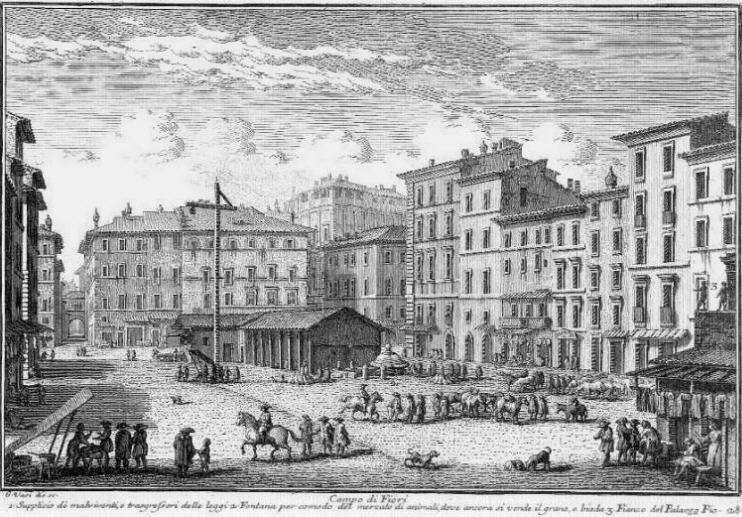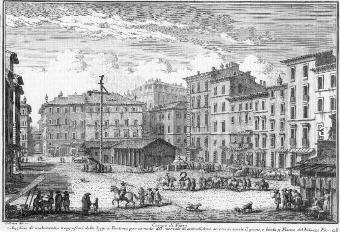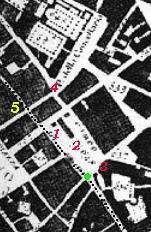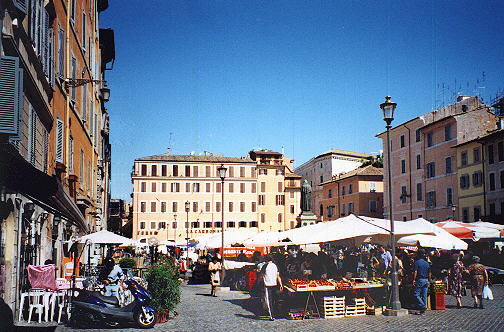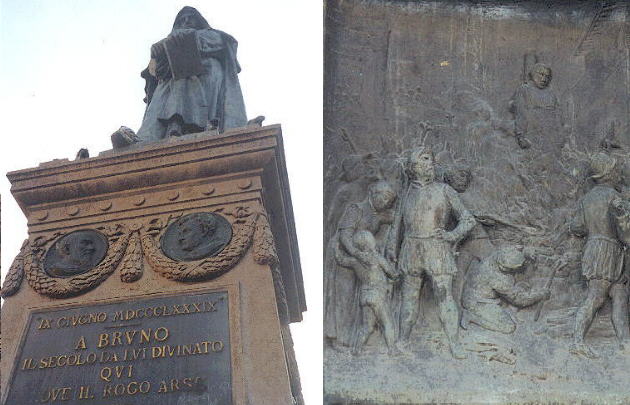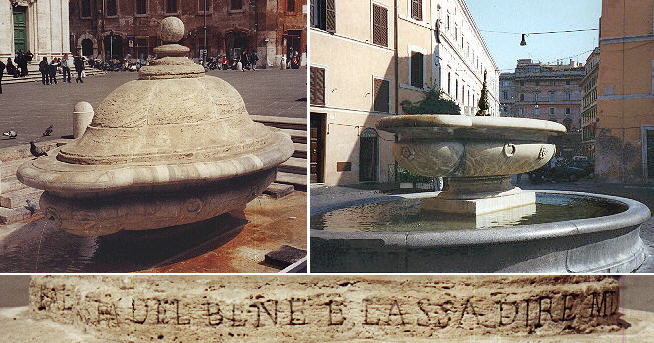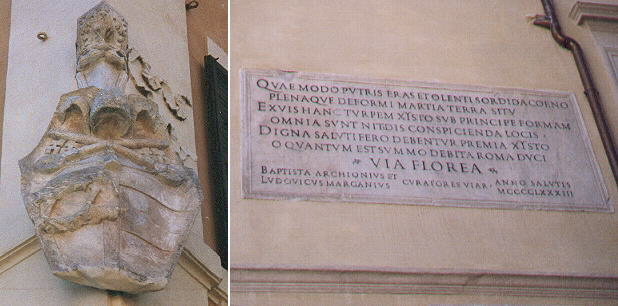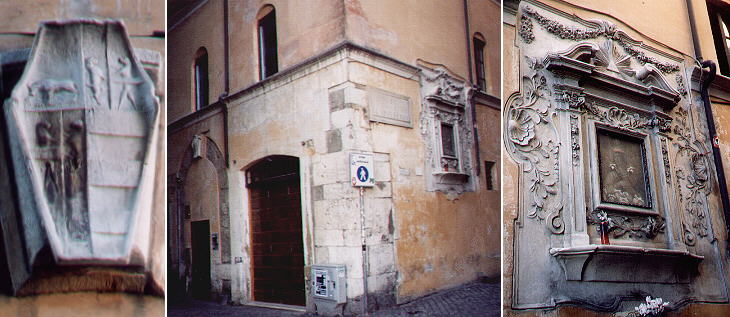  Piazza di Campo dei Fiori (Book 2) (Map C2) (Day 7) (View D7) (Rione Parione) and (Rione Regola)
In this page:
No churches, no palaces, no obelisks, but life (the horse-market) and death (the gallows) are the subject of this plate. Campo de' Fiori was paved with stone only in the XVth century and that explains why it is called Campo (field). The reference to the flowers is uncertain. The view is taken from the green dot in the map below. In the description below the plate Vasi made reference to: 1) The gallows; 2) The fountain; 3) Palazzo Pio. 3) is covered in another page. The small 1748 map shows also 4) Palazzo della Cancelleria Apostolica; 5) Albergo della Vacca. The dotted line in the small map delineates the border between Rione Regola (left lower quarter) and Rione Parione.
The horse market has been replaced by a vegetable-market (previously in Piazza Navona) and the gallows by the mournful statue of Giordano Bruno, but Campo dei Fiori is busy as ever (also at night). The square is slightly longer than it was as the block of houses opposite Albergo della Vacca does not exist any longer. Read William Dean Howells' account of his visit to Campo dei Fiori in 1908. The Statue
The philosopher Giordano Bruno was burnt alive in 1600 as a heretic
in Campo dei Fiori. The statue is a memorial also to other
philosophers persecuted because of their views and it was erected in 1889.
The low fountain (called La Terrina -The Tureen and most likely covered to prevent
horses from watering from its top) which was at the center of the square was moved in 1924 to Piazza della Chiesa Nuova
and it was replaced by a similar one located at the end of the square. La Terrina has
a motto which ends with the following advice "Fa del bene e lassa dire"
(Engage in good works and do not mind what others say).
The Enlargement of Campo dei Fiori
In 1473, in order to facilitate the orderly flow of pilgrims between the two sides of the Tiber in the forthcoming 1475 Jubilee, Pope Sixtus V built on the ruins of an
ancient bridge, Ponte Sisto. The bridge increased the importance and the real estate value of Campo dei Fiori and in 1483 the pope
promoted the cleaning and redesign of the area. An inscription, now at the beginning of Via dei Balestrari (crossbow makers), celebrates the
initiative.
Vannozza Cattanei bore Alexander VI (when he was still a cardinal) four children. Two of them, Cesare and Lucrezia Borgia became famous on their own:
Cesare for his cunning and ruthless attempts to create a kingdom for himself (for Machiavelli he was the perfect example of Italian Principe); Lucrezia
for her beauty and for her alleged use of poison in getting rid of her second husband.
Next plate in Book 2: Piazza di Pescheria Next step in Day 7 itinerary: Palazzo della Cancelleria Apostolica Next step in your tour of Rione Parione: Palazzo Pio Next step in your tour of Rione Regola: Palazzo Falconieri  or to Book 2 or to
The Coats of Arms of the Popes or
to My Home Page on Baroque Rome or to
My Home Page on Rome in the footsteps of an XVIIIth century traveller or to Book 2 or to
The Coats of Arms of the Popes or
to My Home Page on Baroque Rome or to
My Home Page on Rome in the footsteps of an XVIIIth century traveller
|
All images © 1999 - 2003 by Roberto Piperno. Write to romapip@quipo.it
